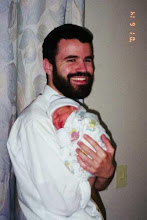The fourth biblical mitzvah is the instruction to institute and follow a particular calendar. This is usually understood to include:
1. Sanctification of the start of each month by a beit din (Jewish court),
2. Public declaration of the new month, based on eyewitness testimony
regarding the new moon, and
3. Calculation of leap months to ensure that specific lunar months will
not stray too far from key points in the annual solar calendar. In the
best-known example, the lunar month of Nisan, in which Pesach occurs, must not
wander too far from the vernal equinox.
Rav Saadia Gaon disagreed with part of this traditional understanding,
though. As part of his 10th century stand against Aharon ben Meir regarding the calendar, Rav Saadia
Gaon claimed that the original method was to set the calendar based upon
rabbinic calculations, and that witnesses were only instituted in the period of
the second Beit haMikdash in order to counter Sadducee challenges to rabbinic
authority.
Have a great day,
Mordechai

My understanding of R' Saadia Gaon, Rabbeinu Chananel, R' Bachya (Shemos 12:2) is that the time of rosh chodesh was always calculated, since Har Sinai. But not that re'iyah was a later addition -- it is part of the ritual of qidush hachodesh.
ReplyDeleteOT1H, it's a tanna who says "hachodesh hazeh lakhem -- kezeh re'ei veqadeish". OTOH, it's two tannaim -- Rabban Gamliel and R' Yehoshua -- who argue about what day Yom Kippur was calculated to be.
(And clearly the actual calculation used shifted over time. Megilah 1:1 refers to before the rule "lo bed"u Pesach" was implemented, as it assumes Purim could fall out any day of the week.)